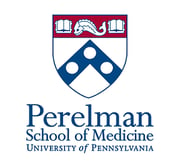Genetic Counseling Masters Programs in Pennsylvania
Genetic Counseling Masters Programs in Pennsylvania
SCHOOL PROFILE


Genetic Counseling Masters Programs in Pennsylvania
For prospective students pursuing a career in the field of genetic counseling, Pennsylvania is an ideal destination. Home to several renowned programs that offer Masters in Genetic Counseling Degrees, Pennsylvania has much to offer those seeking to gain a firm foundation in the intricacies of this specialized field. From prestigious universities to top-notch research facilities, the state has become a hub for aspiring genetic counselors who are eager to take their careers to the next level. A number of institutions in the area offer Masters in Genetic Counseling Degrees, each providing a rigorous and comprehensive educational experience. Offering advanced coursework in medical genetics, clinical genetics, cytogenetics, and molecular genetics, these programs provide students with the knowledge and skills they need to become successful genetic counselors. By immersing themselves in the cutting-edge research and evidence-based practices that are the foundation of this field, students become well-rounded practitioners that can confidently apply their expertise to real-life scenarios. With access to world-class faculty, access to state of the art laboratories, and invaluable internship opportunities, students at these masters programs will have everything they need to excel in their chosen field.








Living in Pittsburgh, Pennsylvania
What is Pittsburgh Like?
Approximately 303,000 individuals reside in Pittsburgh, the second most populous city in Pennsylvania. By comparison, Philadelphia, the state's largest city, is home to a population five times larger than Steel City's. Hence, Pittsburgh is about half as dense as Philadelphia, gifting those who move here a city buzz without feeling too cramped - for the time being. As the secret of this pint-sized metropolis starts to spread, Pittsburgh has witnessed population growth for the first time in almost six decades.
The affordability of Pittsburgh is a major factor in its success as a city to live. Comparatively lower costs for essential items such as rent, food and transportation make living here much more affordable compared to the national average. Moreover, residents exude an aura of friendly warmth and hospitality which makes this city even more inviting.
Pittsburgh provides endless entertainment for its residents, with an extensive selection of attractions, eateries, and atmosphere throughout the city. Tourists come from all over to marvel at Pittsburgh's renowned museums such as the Carnegie Museum of Natural History, Carnegie Museum of Art, and The Frick Art & Historical Center. Families and animal enthusiasts also flock to the Pittsburgh Zoo and PPG Aquarium for an unforgettable experience.
No matter the weather, Pittsburgh has a wealth of entertainment options to keep you occupied, from renowned theatre performances to galleries and concerts. Locals flock to the Byham Theater and Benedum Center downtown for live shows. For a day dedicated to art, don't miss the Mattress Factory, Andy Warhol Museum, Children’s Museum of Pittsburgh, and many other spectacular exhibitions throughout the city.
Pittsburgh Cost of Living
Endless Entertainment and Activities




Pittsburgh's affordability has been drawing many from other regions of the United States. As estimated by BestPlaces, the cost of living in Pittsburgh is notably lower than the national and average – 8.2%. Housing in particular proves to be extremely economical, coming in at 39.5% below the US norm and 15.7% below Pennsylvania's standard.
If you are looking to save on housing costs, consider splitting rent with roommates. Alternatively, Pittsburgh offers excellent rates for studio apartments that are ideal for those who prefer living alone; their average monthly cost being just $1,000. The average rent for a one-bedroom apartment is $1,53.
Though the cost of living in Pittsburgh is competitive, certain areas require slightly more expenditure. Groceries are 8% steeper than the countrywide mean, while utilities rise by 31% and transport requires 3% more than the nationwide average.
Pittsburgh, PA, Quick Stats
Metro Population 2,366,544
Median Home Price $203,150
Median Age 42.8 years old
Median Monthly Rent $892
Average Commute 26.8 minutes
Unemployment Rate 9.9
Average Annual Salary $56,060


Kennywood is a beloved Pittsburgh staple and one that must be experienced to be truly understood. With the recent launch of Steelers Country comes the debut of the highest rollercoaster in Pennsylvania - The Steel Curtain. Whether you cheer for the NFL or not, Kennywood has something to offer all visitors. But most importantly, everyone agrees on one thing: the most delicious finale to any park visit is a serving of Potato Patch Fries! Learn our Insider's Guide to Kennywood for insider tips and tricks!
From college students enticed by reputed universities such as Carnegie Mellon University and University of Pittsburgh to families seeking good schools, parks and the Children's Museum of Pittsburgh, everyone is drawn to Pittsburgh for a unique purpose. Young professionals and singles are further stimulated by the active nightlife scene and abundance of job openings in the expanding domains of technology and healthcare. Retirees can revel in the diverse array of outdoor activities, restaurants, and cultural experiences on offer. Truly, everyone relocating to this city has much to look forward to.


Winters in Pittsburgh bring bone-chilling temperatures and blankets of snow, with average readings fluctuating between the low 20s to mid-30s Fahrenheit from December to February. Significant amounts of snow tend to fall, amounting to an average of 40 inches per season. Icy roads and freezing temperatures can pose a challenge during winter travel, prompting locals to equip themselves with warm garments, snow tires, and other cold-weather necessities.
Pittsburgh summers offer a sultry atmosphere, with temperatures typically ranging from the mid-70s to upper 80s Fahrenheit. The high levels of humidity make the heat feel more oppressive and unbearable during July and August, when the humidity peaks.
Pittsburgh is known for its frequent overcast skies and rains, with an average of 151 rainy days annually. This may be a disadvantage for those who enjoy being out in the sun or engaging in outdoor activities.


Pittsburgh is Chilly in the Winter
Commuting in Pittsburgh
One of the most exasperating aspects of city life is the notorious traffic congestion. This metropolis has been the exceptionally crowded for many years, yet with a diminishment due to the pandemic, the volume has generally trended upwards. In some of the high-traffic zones, one may find oneself caught in gridlock for multiple stoplight cycles. The areas around Interstate 376 leading to the airport and Rte 28 linking Etna/Highland Park/Aspinwall are particularly notorious for their traffic jams.
Pittsburgh residents have a bounty of transportation choices to pick from. Walking appears to be the go-to option, as Pittsburgh ranked exceptionally well on this criterion. Nevertheless, compared to Philadelphia, far fewer Pittsburghers use public transit; just 15% of the population take advantage of it; the same holds true for taxis or motorcycles (1.5%). Nonetheless, Pittsburgh is one of the best places to live without car ownership.




Living in Philadelphia, Pennsylvania
What is Philadelphia Like?
With approximately 1.5 million inhabitants, Philadelphia is the largest city in Pennsylvania and the sixth-most populous city in the United States. This historic birthplace of the U.S., now boasts an impressive 37 institutions of higher learning and was once home to a plethora of firsts, including the nation's first library, hospital, medical school, stock exchange, zoo, and business school. Residents have an urban-suburban mix living experience and generally own their homes. Featuring an array of bars, restaurants, coffee shops and parks - in addition to its liberal leanings - Philadelphia is an ideal place for both families and young professionals alike to settle into.
Experience Philly's breathtaking landscape with a visit to its numerous outdoor recreation spots! Take a guided tour of the city's Magic Gardens and admire its unique sculpture gardens and mosaic art. Rejuvenate your spirit by escaping to Fairmount Park, a 2,000-acre expanse graced with scenic trails for jogging or biking. Warp into the natural world on Schuylkill River Trail's 30 miles from Center City through the city outskirts and towards Valley Forge National Historical Park. Delight in numerous wild creatures or angling at John Heinz National Wildlife Refuge at Tinicum. Unfold picturesque vistas while taking a walk along the boardwalk overlooking the Delaware River or enjoy aquatic activities like kayaking or boating at Spruce Street Harbor Park. Embark on an excursion through Wissahickon Valley Park and explore its dense forests and wildlife while hiking or horseback riding.
Low Cost of Living for a Big City
Access to the Outdoors in Philly




By 2023, the median home value in Philadelphia is substantially lower than the national average. When searching for a rental property, one will find that the rent prices in Philly are markedly below those of cities such as New York City or Washington D.C.
The average cost of a home in Philadelphia is 39.1% lower than the national average of $338,100 and 15.2% reduced than the usual Pennsylvania home at $242,800. A two-bedroom dwelling in Philly currently stands at $1,390 per month, that is 2.8% less costly than the nation's mean of $1,430 and 12.9% more costly compared to the state average of $1,210.
The 'City of Brotherly Love' has a range of cost-effective offerings for everyday life. Reports in 2022 demonstrate that healthcare and grocery-related costs are 4% and 2% lower than the national average, respectively. Philadelphia's renowned dining scene presents a myriad of affordable options that won't cut deep into one's budget, while tax rates are often more wallet-friendly compared to other cities on the East Coast. For instance, Philly's sales tax stands at 6%, a significantly lower percentage in comparison to New York City's 8.875%.
Philadelphia, PA, Quick Stats
Metro Population 6,215,222
Median Home Price $310,375
Median Age 39 years old
Median Monthly Rent $1,230
Average Commute 29.7 minutes
Unemployment Rate 9.9%
Average Annual Salary $61,860


Indulge in Philadelphia's culinary offerings and tantalize your taste buds with the city's array of dynamic restaurants. Dalessandro’s Steaks & Hoagies allows you to savor "the best Philly cheesesteak" with their conveniently constructed hoagies packed with meat, cheese, and onions. South Philadelphia beckons you to L’angolo Restaurant for a classic Italian experience. Venture over to Nam Phuong for delectable Vietnamese delights and Laser Wolf presents an Israeli cuisine.


Experience Philadelphia's incomparable museum scene, with some of the top attractions the city has to offer. From viewing sculptures at the Philadelphia Museum of Art to exploring ancient pottery at the Penn Museum and admiring a variety of sculptures from at the Rodin Museum, there is no limit to what these astounding museums have to offer. Learn more about major events in American history, African American heritage, culture, and arts, or meander among dinosaur bones and dioramas at The Academy of Natural Sciences. Spend your time in Philly exploring this diverse array of exceptional museums for an unforgettable experience.
Indulge in the original shows of The Mask and Wig Club, take in Opera Philadelphia's iconic operas at The Academy of Music. Appreciate the Philadelphia Orchestra's symphonies honoring composers like Beethoven or melodies from classic movies at Verizon Hall within Kimmel Center. Gather to witness the Philadelphia Ballet's diverse productions including traditional pieces like The Nutcracker at The Miller Theater.


Amazing Arts and Museum Culture in Philly
Commuting in Philadelphia
Philadelphia provides a plethora of options to traverse the city with ease. Many people living in areas like Chesterbrook, Swarthmore, and Berwyn have private vehicles for transportation. However, many city dwellers do not own cars as they can benefit from the exemplary public transport systems of America. In fact, 24% of Philadelphia citizens rely on public transit for their daily commute! Conveniently situated, Philadelphia is also highly walkable and bike-friendly which renders its commuters even more choices when it comes to efficient movement. The SEPTA and PATCO networks offer buses, commuter rails, trains and trolleys that ferry passengers across the metro area—including to the Philadelphia International Airport and onto New Jersey over the Delaware River.
















